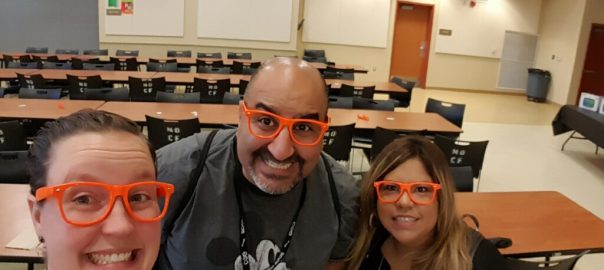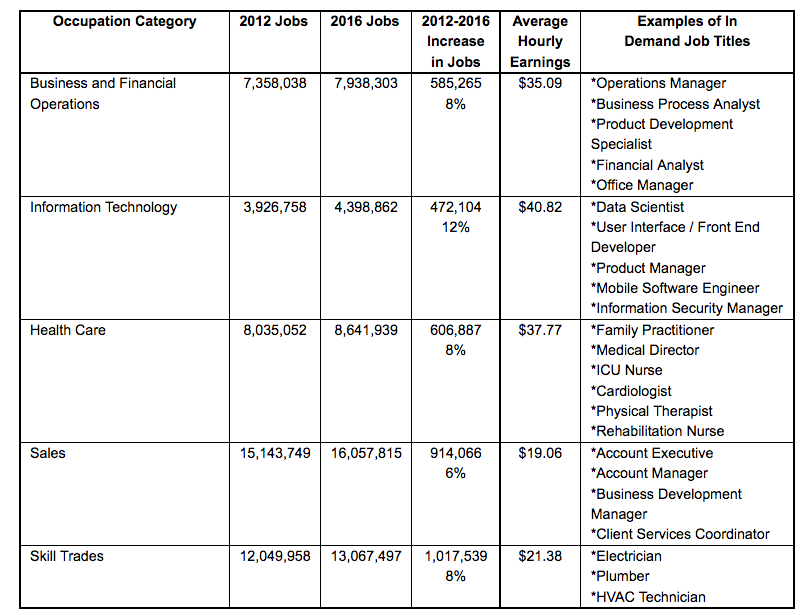Watch this and then look at the lesson provided below. I am here on this earth to help YOU find YOUR purpose. Please allow me to do that for you! ~Sandy
Watch this and then look at the lesson provided below. I am here on this earth to help YOU find YOUR purpose. Please allow me to do that for you! ~Sandy

Currently reading “The Leader In Me”, I awoke with such excitement as to how I can help implement this wonderful idea of creating the paradigm shift that Steve Covey brought to life in 1989 via the business world through the “The 7 Habits of Highly Effective People”.
Being a teacher that began in the early 80s, I realized that many of these were in practice by most elementary schools but not to the degree in which Mr. Covey is suggesting. Teachers always gave students jobs or tasks and changed them weekly. Did we realized the ownership that those tasks brought to those students? I know that we have some incredible ASB groups in our high schools, but we need to share out the leadership in all secondary schools.
Students feel ownership when provided with tasks that need to be done in the classroom and throughout the campus. Mr. Covey saw the shift from in vocabulary from the school to MY school, the classroom to MY classroom, the school grounds to OUR school grounds.
As we have become more independent learners due to the need of meeting all student needs, have we forgotten the need to work together for the whole of community? Do we need to take steps back to see how to have students work INTERdependently as well?
In his well-written book, The Leader In Me, the steps are set out on how to begin this paradigm shift. Simply put, provide a task for students in the classroom, the school, the community. Ask the students, what can YOU do that I am doing? Maybe it is reading the morning bulletin, erasing the board at the end of class, gathering or passing out homework, changing bulletin boards, teaching one of the habits monthly, teaching others within the class in small group situations, leading the Pledge of Allegiance, summarizing the lesson or what is due next class period, etc. This not only helps the teacher, but it helps the students feel ownership in the class.
Professional Learning Communities are no different than what was going on in the past. Professionals getting together to plan lessons, set the calendar, share what is working, going over tests results to see if teaching or tests need to be changed. This also is creating an interdependence.
When I was a math coach in Tulare Joint Union School System, our department had an incredible week of finding the needs of students in the classroom. With the goal being that we didn’t want any of those students falling through the crack, we learned that it was overwhelming task to meet ALL the needs. Then we started looking at our own strengths. What are we best at and how can that assist the entire department. We assigned tasks to each pair of teachers that would work together to build all that needed to be done to meet the needs of all students for that year. We had group-test builders, individual-test builders, those creating tasks for the advanced students, those creating assignments for the gaps in learning for the “strugglers”, those putting the calendar together to meet the goals of the chapters, and more. It was a beautiful work of interdependence that Mr. Covey is talking about here in his book. All teachers took ownership in the work that needed to be done to meet the needs of all the mathematics students during 2006.
It’s not about buying in, it is about understanding the need for everyone to work together as teachers, administrators, students and parents to accomplish the goals of doing what is best for the teaching/learning of all students.
For those of you that know me personally, do you see me in this paradigm shift below? I hope you do and I hope I am now at the 8th Habit! ~Sandy
In short, this is a cut from wikipedia (https://en.wikipedia.org/wiki/The_7_Habits_of_Highly_Effective_People):
The book first introduces the concept of paradigm shift and helps the reader understand that different perspectives exist, i.e. that two people can see the same thing and yet differ with each other. On this premise, it introduces the seven habits in a proper order.
Each chapter is dedicated to one of the habits, which are represented by the following imperatives:
The First Three Habits surround moving from dependence to independence (i.e., self-mastery):
Habit 2 says: you are the programmer. Habit 3: Write the program. Become a leader! Keep personal integrity: what you say vs what you do.
The next three habits talk about Interdependence (e.g., working with others):
The final habit is that of continuous improvement in both the personal and interpersonal spheres of influence.
Covey explains the “Upward Spiral” model in the sharpening the saw section. Through our conscience, along with meaningful and consistent progress, the spiral will result in growth, change, and constant improvement. In essence, one is always attempting to integrate and master the principles outlined in The 7 Habits at progressively higher levels at each iteration. Subsequent development on any habit will render a different experience and you will learn the principles with a deeper understanding. The Upward Spiral model consists of three parts: learn, commit, do. According to Covey, one must be increasingly educating the conscience in order to grow and develop on the upward spiral. The idea of renewal by education will propel one along the path of personal freedom, security, wisdom, and power.[3]
The 7 Habits of Highly Effective People has sold more than 25 million copies in 40 languages worldwide, and the audio version has sold 1.5 million copies, and remains one of the best selling nonfiction business books in history. In August 2011 Time listed 7 Habits as one of “The 25 Most Influential Business Management Books”.[4]
We had 15 teams for MathCounts this year! This was the largest group ever and the most teams ever! It was a great day. It went longer than usual (due to so many teams), and everyone enjoyed it! I’ve attached pictures of the first place team and top 5 individuals. El Portal Elementary from the Mariposa area came for the first time and moved quickly to 3rd place (quite the upset!)
The top 6 teams were:
1st—Granite Ridge
2nd__ Clark Intermediate
3rd—El Portal Elementary
4th—Edison Computech
The top 10 individuals were:
1st—Jai Mehrotra-Varma(Granite Ridge)
2nd—Tyler Ho (Clark)
3rd—Luke Chao (Granite Ridge)
4th—Andrew Lu (Alta Sierra)
5th—Weehan Choi (Granite Ridge)
6th—Deepro Pasha (Granite Ridge)
7th—Iris Wang (Granite Ridge)
8th—Nipun Amarasingh (Alta Sierra)
9th—Lilian Chen (Granite Ridge)
10th—Pratham Hombal (Alta Sierra)
The top 2 teams qualify to go to the state competition so congratulations to Granite Ridge and Clark Intermediate!
The top 3 individuals not on a winning team also qualify to go to state so congratulations to Andrew Lu, Nipun Amarasingh, and Pratham Hombal all from Alta Sierra!
Thanks for Jon Dueck and Fresno County Office of Education for taking time to prepare this math competition for students!


WASHINGTON — The professions expected to show one of the biggest job growth rates in 2017 and the largest growth in sheer number of jobs will be trade skills, according to a year-end report from CareerBuilder and labor market data provider Emsi.
The U.S. economy is expected to add just over 1 million new jobs in fields such as electrician, plumber and HVAC technician in 2017. That’s a job growth rate of 8 percent. The average hourly earnings for professionals in those fields will be $21.38, or about $45,000 a year in 2017, the report says.
While skills trades generally don’t require a college degree, they do require significant training, through apprenticeship programs and both in-class and on-the-job experience.
The professional category that will show the largest job growth rate in 2017 will be information technology. CareerBuilder says that field will add 472,000 jobs next year, for a growth rate of 12 percent. In demand jobs in that field will include data scientists, user interface developers and mobile software engineers.
Business and financial operations, health care and sales also make CareerBuilder’s list of the five top professions for job growth and opportunities in 2017.
“Our research shows that employers are very invested in expanding head count in areas such as analytics and data science, product development and sales as they strive to stay competitive in B2B and B2C markets,” said CareerBuilder CEO Matt Ferguson.
“Skilled laborers will also see high employment demand in the year ahead as will workers in clinical roles,” he said.
CareerBuilder and Emsi used a variety of national and state employment resources as well as online job postings to come up with their list of 2017’s best jobs. The full list is below:

Unemployment is the lowest it’s been in seven years, at 5 percent, and for those with a bachelor’s degree or higher the rate is actually half that. According to the Bureau of Labor Statistics the economy has been adding well over 200,000 jobs a month. And healthcare, professional and technical services, retail, manufacturing, finance and government are all adding jobs.
Current U.S. employees—especially those looking to switch jobs—can expect a raise in 2016. A WorldatWork study found U.S. workers can expect an average base salary raise of 3.1 percent next year, but top performers can expect higher-than-average merit-based salary increases. New research from The Conference Board found that labor markets have tightened faster than expected, and that could mean employers will have to start raising wages faster than they have been. And research from SHRM and Rutgers University shows that the newly hired are seeing increased pay—which reflects the need for businesses to raise wages in order to attract new talent.
For those doing the hiring, employee retention will be a top priority in the new year. In fact, LinkedIn’s 2016 Global Recruiting Trends report found that nearly 60 percent of companies are investing more in their brand in an effort to keep current employees happy and recruit new, well-qualified talent.
Some of the job market and hiring trends to keep in mind as we head into the new year:
Sure, those sectors are growing, but there are plenty of opportunities for new jobs and long-term, thriving careers in areas like marketing, sales, finance and transportation. Recent studies have found that among the top ten fastest growing occupations are nurses, software developers and network and computer system administrators, marketing managers, sales managers, industrial engineers, construction professionals and financial managers.
There’s no question software developers are still in high demand. Nearly one in every 20 open job postings in the U.S. is related to software development and/or engineering. Also in demand, is expertise with data analytics –now one of the most in-demand skills in the U.S.
Some of the highest growth tech companies, like Amazon and Facebook, have a great need for marketing managers. In fact, it’s the highest volume job opening after software developer/engineer. But the requirements are changing, because of the rapid growth of digital consumer advertising. The job increasingly requires the use of analytics to navigate new marketing channels and ways of acquiring customers.
We’ll see a lot more Millennials in management positions in 2016. A new study from Upwork reports that nearly 30 percent of managers today are Millennials, with five percent seniors managers and two percent in executive positions. The study found that within ten years nearly half of Millennials are aiming to be senior managers; seven percent want to be executives and 15 percent want to be business owners. The global consultancy EY (Ernst & Young) is a good example of this leadership transition underway–about 60 percent of its managers are Millennials, as well as 18 percent of its senior managers.
The use of video to attract and recruit talent is increasing because of its high impact—it’s an engaging way to show the culture of a company, as well as the excitement and passion around the the company’s mission, products and services. Expect to see more employee videos shot on cell phones, to give a more authentic peek inside a company, as well as personalized recruiting videos, video job descriptions and, yes, even video job offers.
The technology available to recruiters today is better than it’s ever been, allowing them to optimize the entire recruiting and hiring process, from job descriptions to the process of nurturing and interviewing candidates, to developing and setting compensation. Letting data guide the hand of recruiters will most likely make the experience better for job candidates, allowing companies to better establish and nurture relationships with both current and potential candidates.
According to the Collegiate Employment Research Institute, states in the Mid-Atlantic, Southeast and Southcentral, as well as the Central Midwest will see the greatest uptick in hiring, as much as a 40 percent increase from last year. In fact, regional employers will be increasing their hiring by the greatest percentage next year, nearly 20 percent over 2015. U.S. employers, the Institute’s new trend report says, “are entering the recruiting season with very high expectations for hiring.”
![]()
Whether you are working with students, small groups of coworkers or getting married, It is great to look at Personality or Intelligent Quotient, here is a great website for finding out more about yourself and/or others.
Hiring and retaining talented teachers can be a challenge in any district. But finding recent teaching college graduates who are ready to excel in the classroom their very first year can be even more difficult.
This leaves administrators continuing to question whether college teaching programs are adequately preparing each new generation of educators.
A successful prep program should be rigorous and purposeful, and get student-teachers into actual classrooms earlier rather than later, says Hamlet Hernandez, superintendent of Branford Public Schools in Connecticut and member of the District Administration Leadership Institute.
“Early and consistent classroom experience allows teacher students to see the role of management, routines and rituals in practice, and cannot be accomplished in a two-week field experience,” he says.
New teachers have historically struggled to manage their classrooms, says Hernandez. “Prep programs do not emphasize behavior management—the practice of recognizing how to mitigate different behaviors for different age groups.”
New teachers must be to able to precisely assess students’ ability to learn. They must also understand that students come to the classroom with different abilities, says Hernandez. “It is important for new teachers to know how to differentiate teaching practices, such as providing highly visual cues and clues for ELL students,” he says.
The colleges that produce successful teachers require early and frequent clinical work, integrate technology and set high standards for admission and grading.
Teachers-in-training must complete a preparation program during their undergraduate or post-grad master’s studies. States have different requirements for the level of education that must be completed; most require a student teaching experience and passage of a certification test.
Montclair State University in New Jersey produces effective teachers because its standards are clearly defined, says Susan Taylor, director of the Newark-Montclair Urban Teacher Residency. Taylor’s program pairs Montclair State teaching students with Newark Public Schools mentor teachers and classrooms.
Some education experts have called for a massive overhaul of teaching colleges, claiming institutions are graduating students not ready for the classroom.
Yet others insist the colleges are doing a fine job, and that leaders from K12 schools and higher ed institutions simply need to collaborate more closely on how teachers should be prepared. Here are two opposing views:
Roderick Lucero, vice president for member engagement and support, American Association of Colleges for Teacher Education
Kate Walsh, president, National Council on Teacher Quality
The university’s “Portrait of a Teacher” standards list 12 pieces of knowledge, skills and dispositions every graduate must develop. Included in the portrait is creating learning experiences that promote critical thinking and problem-solving; appreciating diversity among students and colleagues; and possessing strong literacy and communication skills.
When student-teachers practice job interviews or write essays, they must be guided by “Portrait” principles such as demonstrating expert knowledge of the discipline they will teach and promoting communication in the classroom.
The standards have made Montclair State’s student-teachers popular with local districts. Over the past five years, more than 100 of the student-teachers have been hired and retained by a local district, says Jennifer Robinson, director of the university’s Center Of Pedagogy.
Administrators get to know the candidates during their student teaching assignments and therefore have insight into their performance that cannot be gained when a random teacher comes in seeking a job.
“The student-teaching experience is like a 14-week job interview with highly effective candidates for the schools,” Robinson says.
The program at Western Governors University in Utah meets or exceeds every state’s standards for teacher prep to ensure all graduates are qualified to teach in any district in the nation.
The curriculum is competency-based, meaning graduates must demonstrate they have mastered each standard before they advance. Instead of earning credit hours and grades for a specific course taken during a set period of time, students take an assessment when they feel they have mastered a certain skill.
“If a student takes tests and does homework and gets a B in a specific course, what that represents is ambiguous,” says Phil Schmidt, dean of the Teachers College. “But at WGU, students demonstrate in a concrete way that they can lead a class.”
The Missouri Department of Education also sets clear standards. To ensure graduates are ready for the classroom, representatives from the Department of Education observe and grade students during their student-teaching on four highly critical standards: content knowledge, differentiating instruction, using data to inform instruction and classroom management.
“So all teacher colleges in Missouri know they must instill these skills in their students before student-teaching,” says Paul Katnik, Missouri’s assistant commissioner for education quality.
Just because today’s teaching students are digital natives does not mean they know how to use technology in the classroom, says Christina O’Connor, co-director of the Teachers Academy at University of North Carolina Greensboro.
“The current teacher prep students don’t have the benefit of observation because when they were students, teachers did not use technology as an instructional tool the way they do today,” O’Connor says.
University faculty integrate technology in teaching courses so students can observe how to use it in their future classrooms. Simulation software, for example, allows student-teachers to interact with virtual students and exercise the classroom management skills they are taught in their theory classes, such as quieting a noisy room.
Source: National Council on Teacher Quality Teacher Prep Review, 2014
“The level of disruption and types of misbehavior, such as a student pestering a peer, can be adjusted so the teacher students can practice all types of scenarios they may not see in their clinical experiences,” says O’Connor.
Student-teachers also observe their fellow student-teachers and veteran teachers on live streams from real Greensboro-area classrooms. “The class can have a discussion on what the educator is doing correctly or can improve on, and their commentary can be attached to the video so the observed educator can reflect on their own practices, too,” says O’Connor.
At Arizona State University’s Mary Lou Fulton Teacher’s College, students fully immerse themselves in a K12 classroom during their senior year. “Instead of following the ASU calendar, our seniors follow their clinical district’s calendar,” says Cory Cooper, interim director for teacher preparation. “They arrive at their school two weeks early to prepare.”
In this model, the mentor teacher and student-teacher are considered co-teachers from the first day, says Cooper. They conduct parent-teacher conferences together and grade papers as a team. “When the student-teachers begin their first full-time teaching job, they are more like second-year teachers who know how to manage a classroom and use data,” Cooper adds.
To ensure positive experiences for student-teachers, a full-time supervisor from Arizona State visits each host school. The supervisor observes in the classroom to determine where student-teachers are struggling so the mentor can focus on building certain skills. The supervisors also offer professional development to mentors so they can effectively coach student-teachers to improve classroom management or content delivery skills, says Cooper.
Such methods appear to be working. Over 87 percent of Arizona State’s graduates remain in the teaching profession after three years, which is 7 percent higher than the national average, says Cooper.
Only the best students from high school should be accepted into teaching programs, says Neil Duggar, dean of Dorothy M. Bush College of Education at Dallas Baptist University.
“The requirements for entry into our program exceed Texas standards and those of most other teacher prep programs to ensure we are getting top-performing students,” Duggar says.
Applicants to the College of Education must have a minimum 3.0 GPA, whereas the state requires only a 2.5 for teaching colleges.
Student-teachers prove themselves capable educators before entering a classroom for their clinical experience. “In addition to passing both Texas teaching certification tests, teacher students must teach a sample lesson to a panel of veteran teachers,” says Duggar. “If they are favorably scored, then they can begin their clinical teaching.”
Additionally, while Texas requires that student-teachers observe classrooms virtually for 30 hours prior to clinical teaching, Dallas Baptist students must watch for 220 hours.
One of the biggest issues with teacher prep programs today is the overall fear of the word “training,” says Kate Walsh, president of the National Council on Teacher Quality.
“In the 1970s, it was decided that ‘training’ was a word that undervalued the complexity of education,” Walsh says.
It was feared that “training” would give teachers preconceptions about what students need. Training could create teachers who, rather than reflecting on the appropriate response, were more liable to pull a predetermined reaction from a set “bag of tricks” when, for example, a student spoke out of turn, says Walsh.
Yet for specific challenges, such as reaching growing populations of ELL and minority students, Walsh concludes, teachers need training in proven practices to provide meaningful praise and to establish rules and routines.
Kylie Lacey is associate editor.
Everyone has a unique gift — something that is just undeniably “you” and is precisely useful to those around you. It’s much more than a skill — it is an ingrained strength fueled by your deepest passions, and nurtured by an unwavering sense of purpose. Most people never find their unique gift, either because they don’t realize they have one, don’t believe they have one, haven’t attempted to find it, or don’t recognize it when it is staring them in the face. For those willing to start the search, this top 10 is for you.